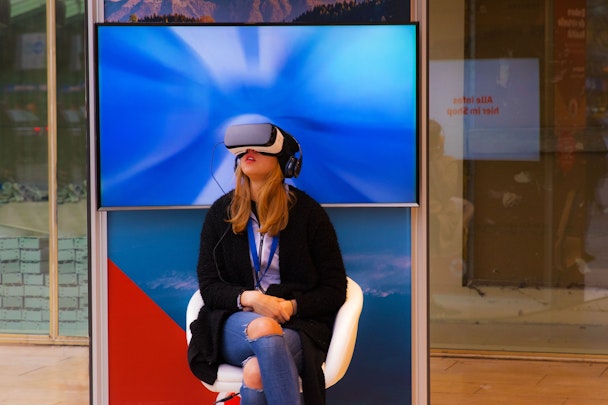Virtual Reality can rejuvenate advertising but it won’t solve every business problem, says report
Advertising experiences in Virtual Reality (VR) and Augmented Reality (AR) offers plenty of potential to get consumers interested in advertising again – but brands and advertisers still need to overcome the high cost, ROI, and storytelling challenges associated with creating these experiences.

New report: Is Immersive VR the Future of Advertising?
This is one of the key findings of a new report launched by The Drum, in association with Vibrant Media, which examines if ads in VR or AR can help solve ad-blocking and whether it’s time for a new model in the industry.
The report, Is Immersive VR the Future of Advertising? compares the expected growth of VR and AR experiences, with AR expected to reach mass adoption quicker than VR. At the same time, it examines the challenges faced by brands in terms of strategizing their investment in these technologies.
Most of the experts interviewed for the report agreed that ads in VR and AR can make advertising fun and immersive for the consumer, but brands need to tread carefully. Much of it depends on whether a consumer will gain a far superior experience by seeing an ad in AR while better content and targeting remains as essential as ever.
Despite these reservations, other findings paint an optimistic future. A consumer poll by Vibrant Media found 40% of consumers saying VR and AR Ads would make them less likely to use an ad-blocker. Furthermore, a study by AOL revealed that 62% of advertisers in the UK believe there is room for VR in the digital video marketplace, compared to 64% globally.
Engaging consumers with relevant advertising is a hot topic in the industry, especially with ad-blocking on the rise. According to Forrester, 50% of US online adults actively avoid ads on websites, while 47% avoid mobile in-app ads. Some of the tech giants are experimenting with ways to keep their audiences engaged. Google’s YouTube will no longer force viewers to watch 30-second unskippable ads because they want to “provide better ads experience for users online” while Snapchat is innovating experiences for users with its AR World Lenses feature, which overlays pictures with 3D filters.
Commenting in the report, Helen Mussard, VP of global marketing at Vibrant Media, says: “The stats are showing that people are crying out for new ways to interact with brands. People have a higher attention span in AR and VR because they truly engage and immerse themselves in it and then they walk away feeling they've had a really great experience - so it doesn't feel like an ad.”
The report contains contributions from Lawrence Weber, managing partner of innovation at Karmarama; Resh Sidhu, creative director of VR at Framestore; Samuel Ellis, head of innovation at M&C Saatchi; Philippa Baldwin, managing partner at Grey; Sean King, CEO at Seven; Sille Opstrup, head of digital at Pernod Ricard UK; Natacha Perret-Cohen, account manager at OMD; Mike Dando, EMEA manager of advertising and promotions at Epson; Helen Mussard, VP of global marketing at Vibrant Media; and Craig Gooding, CEO and founder at Vibrant Media.


